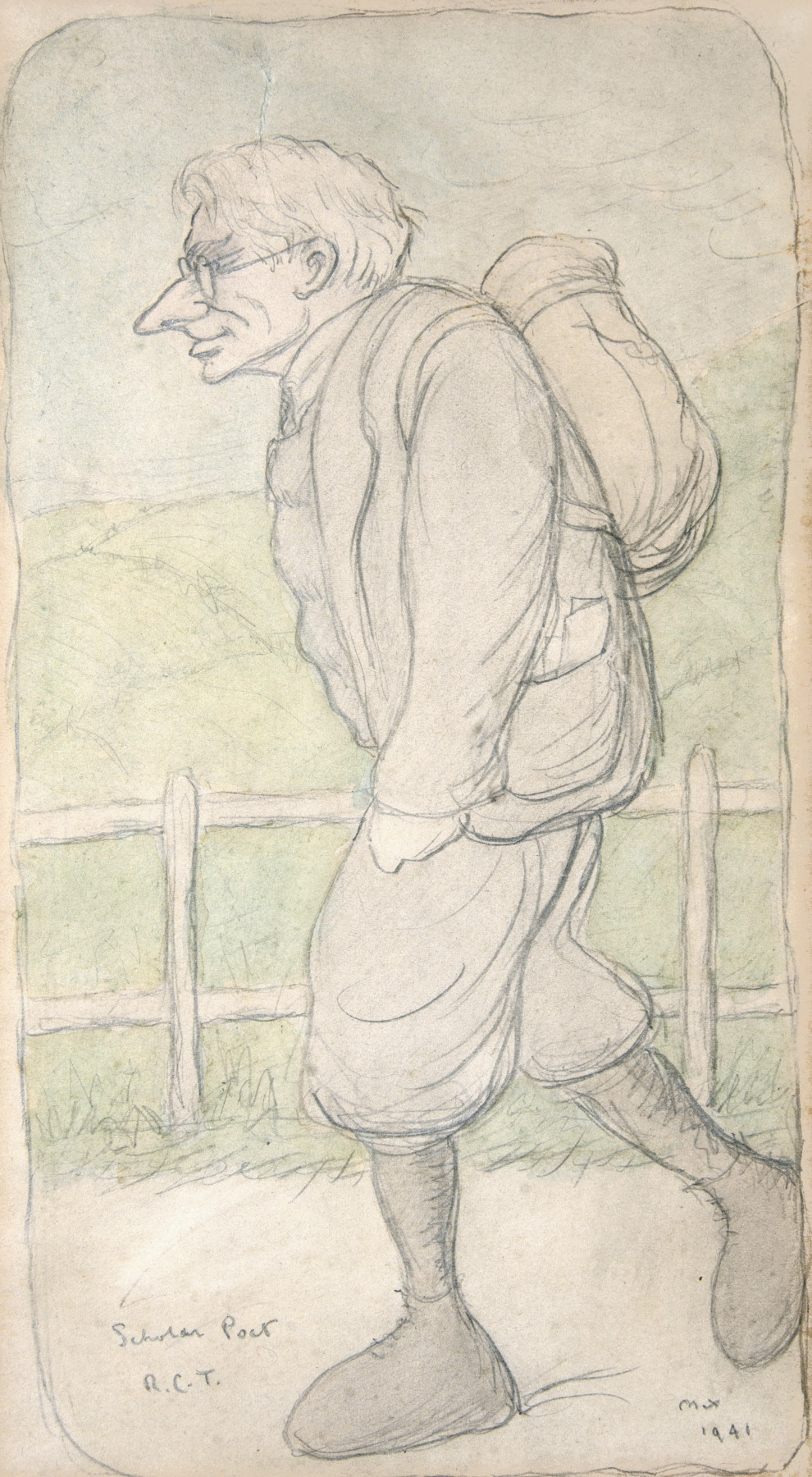
(click image to enlarge)
Scholar Poet R C T
During the Second World War, Max Beerbohm developed a friendship with the poet and translator, Robert Calverley Trevelyan (1872-1951). Like his younger brother, the historian, G M Trevelyan, R C Trevelyan had been a member of the elite intellectual society, the Apostles, while at Cambridge. Consequently, he became a friend of members of the Bloomsbury Group, including E M Forster, with whom he travelled to India in 1912. Trevelyan had married the Dutch violinist, Elizabeth van der Hoeven, in 1900, and they settled at The Shiffolds, in Surrey, about four miles from Dorking. There they brought up their son, the artist, Julian Trevelyan, who was born in 1910. Robert’s translations – mainly from Greek and Latin, and including three plays by Sophocles – influenced his own poetry and verse dramas.
On the eve of war, in January 1939, Beerbohm and his wife, Florence, left their home in Rapallo, on the Italian Riviera, and returned to England. They moved into Abinger Manor Cottage, a small Tudor house owned by their friends, the writer, translator and patron, Sydney Schiff, and his wife, Violet. It was located in the village of Abinger Common a mile or so north of The Shiffolds, the home of the Trevelyans.
The parish of Abinger had attracted creative figures for some years, including E M Forster, who, since 1925, had lived at his family home at Abinger Hammer. In 1939, a number of these figures came together to found the monthly literary magazine, The Abinger Chronicle, published by R C Trevelyan and edited by Sylvia Sprigge. the wife of the Manchester Guardian journalist, Cecil Sprigge. Apart from Beerbohm, Forster and Trevelyan, the chief contributors to The Abinger Chronicle were Oliver Lodge, Desmond McCarthy and the composer, Ralph Vaughan Williams (a contemporary of Beerbohm’s at Charterhouse).
Beerbohm drew the present affectionate caricature of Trevelyan for the October 1941 issue of The Abinger Chronicle. In her memorial essay, ‘Max in Abinger’, published in The Twentieth Century in July 1956, Sylvia Sprigge described Trevelyan as ‘a heavily-booted, tall, striding scholar-poet, with a tiny rucksack on his kindly, stooping back containing one or two books to read’ (page 66); this exactly matches the image presented by Beerbohm.
Early on the morning of 3 August 1944, the Beerbohms’ Abinger home was almost demolished by debris, as a result of the bombing of the nearby church. They survived, though their landlord, Sydney Schiff, died two months later, possibly as a result of the shock. They eventually found refuge with Ralph and Violet Wood at Flint Cottage, Box Hill, north of Dorking (which was once the home of the Victorian novelist, George Meredith). Their move may have contributed to the folding of The Abinger Chronicle, the last issue of which appeared in September 1944.